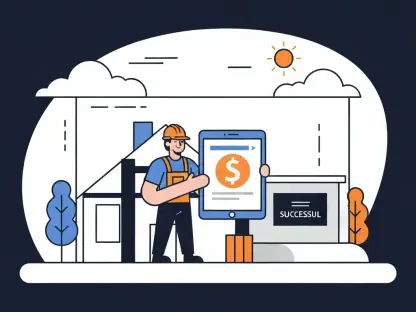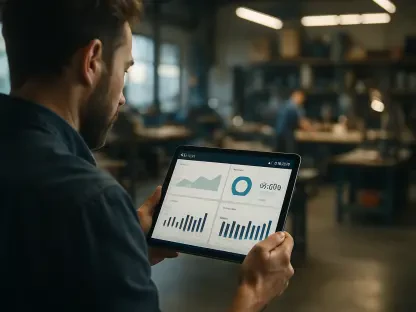The future of payments technology presents an immense opportunity for startups to revolutionize how we pay for goods and services. This space has long been a fertile ground for disruptors to innovate and make their mark, as evidenced by key players like PayPal in payment systems, Monzo in online-only banking, and Wise in cross-border currency transfer. The driving force behind these significant changes is technology, not the other way around.
iPhone 5S, introduced in 2013 with its biometric scanning, transformed the payment landscape. Today, it’s commonplace to use smartphones at POS terminals without a second thought, highlighting the transformative power of underlying technology. This profound shift in how transactions are conducted has been significantly influenced by the rapid adoption of mobile and digital wallets, offering an entirely new level of convenience and security for consumers and businesses alike.
This transformation has also been spurred by the rise of cashless transactions. The pandemic accelerated the move away from cash, propelling the global digital payments market towards a projected value of $36.75 trillion by 2029, according to Statista. Fintechs have capitalized on this shift, pushing traditional payment ecosystems towards rapid change and leveraging technological advancements to expand their reach. This unprecedented shift underscores a broader trend where financial technology is not just adapting to consumer needs but reshaping them, providing clues to what the future of payments might look like.
The Role of IT Leaders in Payments Technology
Understanding and Harnessing Payments Technology
Tony Craddock, founder of The Payments Association, emphasizes the crucial role of IT leaders in understanding and harnessing payments technology to create new products and services that are yet to be conceived. This implies that IT professionals must stay abreast of the latest technologies and be willing to experiment with cutting-edge innovations. Business customers too are showing a willingness to adapt, with Capgemini’s research indicating that 89 percent of SMEs are reconsidering their banking relationships across various product categories, including payments.
This evolving dynamic signals a shift towards a more flexible and tech-driven approach to financial services. IT leaders must, therefore, foster a culture of continuous learning and experimentation within their organizations to stay ahead of the curve. It’s not just about deploying new technologies but also understanding how they can be integrated into existing systems to solve real-world problems and enhance user experience. As technology continues to evolve, so too must the strategies and frameworks employed by IT leaders to remain competitive in an increasingly digital world.
Importance of Technology Platforms
Additionally, a survey by S&P Global underscores the importance of technology platforms in payment processing. For international merchants with significant online sales, the quality of the tech platform is the top factor in choosing a payment processing partner. This preference highlights the necessity for robust, scalable, and secure platforms that can handle high transaction volumes without compromising on performance or security.
As businesses expand globally, the demand for more efficient and reliable payment solutions grows, placing higher expectations on technology providers to deliver state-of-the-art platforms. This has led to increased investment in the development of AI-driven fraud detection systems, real-time transaction tracking, and advanced encryption methods. Understanding these platforms and how to leverage their capabilities effectively is crucial for IT leaders aiming to provide seamless and secure payment experiences for clients and consumers alike. Continuous innovation and adaptation will be essential in meeting the evolving demands of the global market.
The Rise of Paytechs
Emergence and Value of Paytechs
Paytechs, a subset of fintechs focusing solely on the payments value chain, have emerged as significant players, representing a quarter of all fintechs. The sector is valued at over $12.56 trillion and caters to a growing digital economy with seamless payment solutions for consumers and businesses alike. These companies are revolutionizing traditional financial practices by offering innovative payment services like Buy Now, Pay Later (BNPL) and social commerce, which are becoming increasingly popular.
The rise of paytechs also illustrates a shift towards more specialized financial services aimed at addressing specific pain points in the payments ecosystem. This specialization allows for the development of more sophisticated and user-friendly solutions that can cater to the unique needs of different market segments. The integration of advanced analytics and machine learning algorithms into paytech platforms further enhances their capabilities, enabling them to provide personalized financial services and improve overall customer experience. As a result, paytechs are not only transforming the payments landscape but also setting new benchmarks for innovation and efficiency in the financial technology sector.
Key Areas in Payments Technology
Key areas within the current state of payments technology include:
Buy Now, Pay Later (BNPL): BNPL allows consumers to spread out the cost of purchases with minimal or no interest, making it an attractive alternative to traditional credit cards and personal loans. Initially popular for lower-cost fashion purchases, its applications have expanded into areas like corporate purchasing and non-discretionary expenses such as healthcare, legal services, and auto repairs. This expansion signifies a growing trust in BNPL options and highlights their potential to revolutionize various sectors by providing flexible financing solutions.
Open Banking: This technology enables consumers and small businesses to share their financial data with third parties, fostering innovation in new banking and payment solutions. The use of APIs facilitates cost-effective and seamless money movement. Originating from the European Union’s PSD and PSD2 directives, open banking has enabled Wise and other platforms to offer low-cost international money transfers and new embedded financial services. By democratizing access to financial data, open banking is paving the way for more competitive and user-centric financial products and services.
Cloud Computing and Serverless Architecture: The shift to cloud computing offers significant advantages in terms of cost, speed, security, and the ability to keep systems up-to-date. Cloud adoption is reshaping the landscape for payment technologies. The flexibility and scalability provided by cloud solutions allow businesses to develop and deploy payment applications much faster, meeting market demands more efficiently. Additionally, serverless architecture minimizes the need for infrastructure management, enabling developers to focus more on innovation and enhancing user functionalities. This transition not only reduces operational costs but also ensures that payment systems remain resilient and capable of handling large, fluctuating transaction volumes.
Social Commerce: The integration of e-commerce capabilities into social media platforms allows businesses to sell directly through shoppable posts, buy buttons, and direct messaging. A significant portion of businesses now sell through social networks, according to a Global Payments survey. This trend underscores the blending of social interaction with commercial activities, creating new opportunities for businesses to reach and engage with customers. Social commerce leverages the extensive reach and user engagement of social media platforms to facilitate seamless shopping experiences, transforming how consumers discover and purchase products.
Emerging Technologies in Payments
Programmable Money and Distributed Ledger Technology
Looking ahead, emerging technologies such as programmable money, distributed ledger technology, and embedded finance are poised to drive innovation in the payments space. These advances will enable new ways of conducting transactions that we cannot yet fully envision. Programmable money, for instance, allows financial assets to be designated for specific uses, adding an extra layer of control and security to transactions. This can streamline complex payment processes and ensure that funds are used as intended, reducing the risk of misuse and fraud.
Distributed ledger technology, or blockchain, underpins cryptocurrencies like bitcoin by providing a secure and decentralized method of recording transactions. This technology offers significant potential for revolutionizing various aspects of the payments industry, from cross-border transactions to supply chain financing. By enabling transparent and immutable records, distributed ledger technology can reduce the need for intermediaries, lower transaction costs, and increase the speed and efficiency of payments. As these technologies continue to develop, they promise to unlock new possibilities and reshape the future of payments in ways that are both innovative and transformative.
Embedded Finance
Embedded finance integrates financial services into non-financial applications, enhancing the consumer experience by making payments seamless and often invisible. For example, the embedded finance model used by Uber allows users to pay for rides without an upfront payment. This integration simplifies the payment process and provides a frictionless experience for users, driving higher engagement and customer satisfaction. Future applications may include paying tolls or at petrol stations without manual transactions, further embedding financial services into everyday activities and making them more convenient for consumers.
The potential of embedded finance extends beyond simple transactions, offering opportunities for personalized financial services and products. By integrating financial services directly into platforms where users already spend time, businesses can provide tailored offers and solutions that meet individual needs. This can lead to increased customer loyalty and retention, as well as new revenue streams for companies. As embedded finance continues to evolve, it is likely to play a crucial role in shaping the future of payments by making financial services more accessible, integrated, and user-friendly.
Biometric Authentication
With fraud losses reaching £727 million in 2022 in the UK, the need for advanced fraud prevention methods is critical. Biometric authentication involves using individual physiological traits like fingerprints, facial recognition, and vein mapping for secure verification. This method is already in use with smartphones and is expanding into other areas, offering a high level of security while reducing friction during checkout processes. The growing adoption of biometric authentication signals a move towards more secure and convenient verification methods that can effectively combat fraud and enhance the overall transaction experience.
As the technology behind biometric authentication continues to improve, its applications are likely to expand beyond payments to include various aspects of digital identity verification. This could eventually lead to a more secure and seamless online ecosystem, where users can authenticate themselves quickly and securely across multiple platforms. The adoption of biometric authentication could also pave the way for new innovations in areas like access control and personalized services, further transforming how we interact with digital systems and conduct transactions in the future.
Anti-Fraud AI
Artificial intelligence plays a key role in fraud detection, analyzing vast data sets to identify suspicious activities. This technology is evolving to include generative AI, which will further enhance the fight against fraud by predicting and preventing fraudulent activities with greater accuracy. By leveraging machine learning algorithms and real-time data analysis, AI can detect patterns and anomalies that human analysts might miss, offering a powerful tool for combating fraud.
AI-driven fraud detection systems can also adapt and learn from new threats, becoming more effective over time. This continuous learning capability enables financial institutions to stay ahead of emerging fraud tactics and protect their customers more effectively. The integration of AI into payment systems not only enhances security but also improves operational efficiency by automating complex processes and reducing the need for manual intervention. As AI technology continues to advance, its role in fraud prevention is expected to grow, making payments systems more secure and resilient against evolving threats.
Tokenization
Tokenization involves substituting sensitive data with a non-sensitive token, which can maintain security during transactions. The expansion of tokenization includes various assets such as stocks, bonds, digital assets like tweets, and cryptocurrencies, broadening the scope of secure transactions. This technology offers a robust solution for protecting sensitive information, reducing the risk of data breaches and enhancing privacy for consumers and businesses alike.
By converting sensitive data into unique tokens that cannot be reverse-engineered, tokenization ensures that even if transaction data is intercepted, it remains useless to malicious actors. This added layer of security is especially important in a digital economy where data breaches and cyber threats are on the rise. Tokenization also complements other security measures, such as encryption and biometric authentication, creating a multi-faceted approach to safeguarding financial transactions. As digital payments continue to evolve, tokenization will play a crucial role in maintaining trust and security in the payments ecosystem.
Programmable Money
Programmable money allows financial assets to be designated for specific uses, adding a layer of control and security. It can be programmed for particular conditions, such as being available only after a certain event. This could potentially streamline transactions and prevent misuse of funds, as seen during the pandemic with Bounce Back Loans. The ability to program money opens up new possibilities for automating complex financial processes and ensuring that funds are used as intended.
For example, programmable money can be used to automate payroll, conditional payments for services, or fund disbursement in various sectors, such as insurance or government grants. This technology enables greater transparency and accountability, reducing the risk of misallocation and fraud. Moreover, programmable money can facilitate more efficient and precise financial management, allowing organizations to better track and control their expenditures. As this technology matures, it is poised to transform how financial transactions are conducted, offering new levels of efficiency, security, and control.
Distributed Ledger Technology
Distributed ledger technology, or blockchain, underpins cryptocurrencies like bitcoin by providing a secure and decentralized method of recording transactions. This can be particularly beneficial in B2B payments, reducing the complexity and time involved in manual reconciliation. Blockchain technology offers a transparent and immutable record of transactions, eliminating the need for intermediaries and reducing the risk of errors or fraud.
In addition to its applications in cryptocurrencies, distributed ledger technology has the potential to revolutionize various industries by enabling more secure and efficient processes. For example, in supply chain management, blockchain can be used to track the movement of goods, ensure authenticity, and reduce counterfeiting. In the financial sector, it can facilitate faster and more secure cross-border payments, streamline regulatory compliance, and enhance transparency. As the adoption of distributed ledger technology grows, it will play a significant role in reshaping the future of payments and other critical sectors.
Payment Orchestration
The future of payments technology holds vast potential for startups to redefine how we purchase goods and services. This sector has consistently provided a fertile environment for disruptors to innovate, proven by the success of companies like PayPal in payment systems, Monzo in online banking, and Wise in international currency transfers. It’s important to note that technology is the driving force behind these revolutions.
When the iPhone 5S was launched in 2013 with biometric scanning, it revolutionized the payment landscape. Nowadays, using smartphones at point-of-sale terminals is second nature, underscoring the transformative influence of such technology. This major shift in transaction methods can be largely credited to the widespread adoption of mobile and digital wallets, which offer consumers and businesses remarkable convenience and security.
The shift towards cashless transactions has also been accelerating, significantly driven by the COVID-19 pandemic. This shift helped propel the global digital payments market toward an estimated value of $36.75 trillion by 2029, as reported by Statista. Fintech companies have seized this opportunity, propelling traditional payment systems towards rapid evolution and using technological advancements to broaden their influence. This significant shift highlights a larger trend where financial technology is not merely keeping pace with consumer expectations but actively reshaping them, providing insights into the future landscape of payments.









